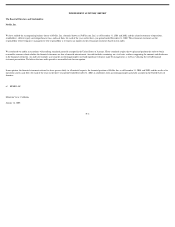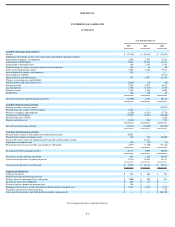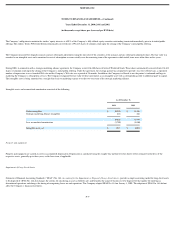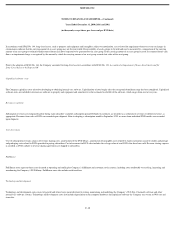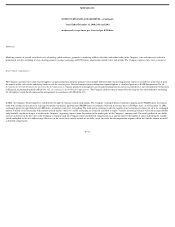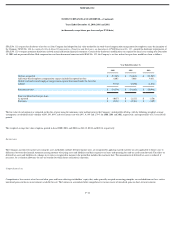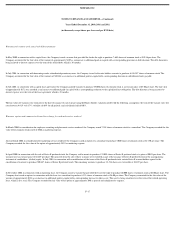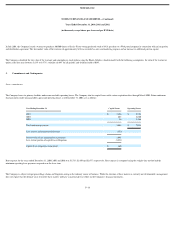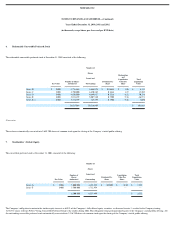NetFlix 2002 Annual Report Download - page 60
Download and view the complete annual report
Please find page 60 of the 2002 NetFlix annual report below. You can navigate through the pages in the report by either clicking on the pages listed below, or by using the keyword search tool below to find specific information within the annual report.
NETFLIX, INC.
NOTES TO FINANCIAL STATEMENTS—(Continued)
Years Ended December 31, 2000, 2001 and 2002
(in thousands, except share, per share and per DVD data)
In accordance with SFAS No. 144, long−lived assets, such as property and equipment and intangibles subject to amortization, are reviewed for impairment whenever events or changes in
circumstances indicate that the carrying amount of an asset group may not be recoverable. Recoverability of assets groups to be held and used is measured by a comparison of the carrying
amount of an asset group to estimated undiscounted future cash flows expected to be generated by the asset group. If the carrying amount of an asset group exceeds its estimated future cash
flows, an impairment charge is recognized by the amount by which the carrying amount of an asset group exceeds fair value of the asset group.
Prior to the adoption of SFAS No. 144, the Company accounted for long−lived assets in accordance with SFAS No. 121, Accounting for Impairment of Long−Lived Assets and for
Long−Lived Assets to be Disposed Of .
Capitalized software costs
The Company capitalizes costs related to developing or obtaining internal−use software. Capitalization of costs begins after the conceptual formulation stage has been completed. Capitalized
software costs are included in internal−use software in property and equipment and amortized over the estimated useful life of the software, which ranges from one to two years.
Revenue recognition
Subscription revenues are recognized ratably during each subscriber’s monthly subscription period. Refunds to customers are recorded as a reduction of revenues or deferred revenue, as
appropriate. Revenues from sales of DVDs are recorded upon shipment. Prior to adopting a subscription model in September 1999, revenues from individual DVD rentals were recorded
upon shipment.
Cost of revenues
Cost of subscription revenues consists of revenue sharing costs, amortization of the DVD library, amortization of intangible assets related to equity instruments issued to studios and postage
and packaging costs related to DVDs provided to paying subscribers. Cost of revenues for DVD sales includes the salvage value of used DVDs that have been sold. Revenue sharing expense
is recorded as DVDs subject to revenue sharing agreements are shipped to subscribers.
Fulfillment
Fulfillment costs represent those costs incurred in operating and staffing the Company’s fulfillment and customer service centers, including costs attributable to receiving, inspecting and
warehousing the Company’s DVD library. Fulfillment costs also include credit card fees.
Technology and development
Technology and development costs consist of payroll and related costs incurred related to testing, maintaining and modifying the Company’s Web Site, Cinematch software and other
internal−use software systems. Technology and development costs also include depreciation on the computer hardware and capitalized software the Company uses to run its Web site and
store data.
F−10




